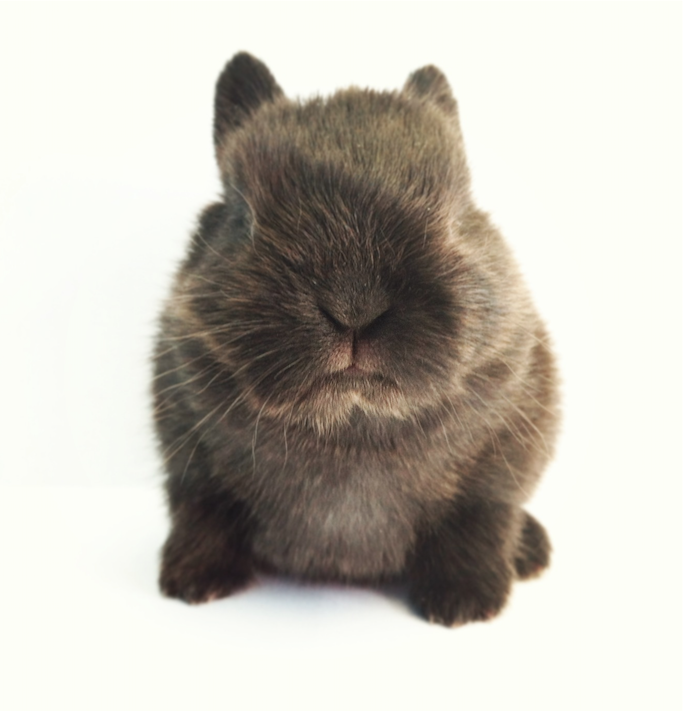This is a guide to rabbit health and sicknesses. I am writing this to
the very best of my knowledge, but please remember I am not a vet,
these are just some tips on ways I have found useful over the years.
An
awesome forum I have joined, is Rabbit Talk (http://rabbittalk.com/). I
highly recommend joining this site, as I have found it very helpful-
plus it's great to have people to ask if you are having problems with
your rabbits.
I hope it helps :)
Sore Hocks:
Generally found in breeds with more thin coats, such as Rex or Satin.
Occurs
when rabbit is living in a cage with wire on the bottom, or any other
hard serface. Can also happen if cage isn't cleaned often enough-
causing loss of fur on hind feet (which is where most of their weight is
held) and may be found in front feet also, abscess's, infection, and
even death if not dealt with (very worst case scenario).
Treatment:
Make
sure you put something in the hutch, such as a sheet of plywood, for
the rabbit to sit on, if the bottom is wire. Sore Hocks can also happen
if the rabbit is over weight, so a good feeding program is essential for
your rabbits health.
Ear Canker:
Ear Canker, or Ear Mites, is caused by
Mites that burrow into the rabbits ear. An infected rabbit will shake
it's head, and try to scratch his ears lots. The ears/ear, will look crusty and probably have some scabs in it, caused by the rabbits scratching.
Treatment:
You
can use an eye dropper to put seven drops of oil (any cooking oil will
do) into the rabbits ear, this will suffocate the Mites. Use cotton buds
to spread the oil around in the rabbits ear, repeat this method daily
for three days, then wait ten days. Repeat this until the rabbits ears
start to look clean and normal again.
Wool Block:
This is a condition found more often in long haired breeds, such as Angoras or Jersey Woolies- but it can happen to normal coated breeds as well. When rabbits groom them selves, it's only natural that they would also swallow some of their fur in the proses. A build up of this fur in their stomach leads to Wool Block. Because the fur stays in their stomach, it causes their bodies to think that they're full- which can and will lead to starvation if proper care is not taken.
A rabbit with Wool Block, will get blocked up, and you may notice decreased size of droppings, or no droppings at all. The rabbit may also seem to lose his apatite, making him lose weight very quickly. Rabbit go down hill extremely fast if they aren't eating, so it's very important to start treatment soon as possible.
Treatment:
If your rabbit has Wool Block, then the best home made remedy, is Pineapple ( juice or solid), or Papaya tablets. Both of these things will help break down the fur stuck in your rabbits stomach. You can feed the rabbit chunks of fresh Pineapple if he is still eating, put Pineapple juice in his water, or you can also crush up the Papaya tablets and add to the rabbits feed. There are many other ways to prevent and cure Wool Block, but unfortunately, it would take a long time to list them all out!
Fur Mites:
Yet another case of the dreaded mites. These mites, unlike Ear mites, thrive in the rabbits fur- creating fur loss, flaking skin, and like Ear mites, are very uncomfortable and itchy for the infected rabbit.
Treatment:
The easiest, cheapest, way to treat this I have found, is to apply cooking oil to the rabbit for (depending how bad the fur mites are) about two weeks. The oil will, like Ear mites, suffocate the mites- and I guess it's kinda like a bunny moisturiser too :) I under stand this will most likely not work if your bunny has Fur mites all over his body, but is much cheaper then all those creams you find at Vets
Fur mites are also contagious, so if you have more then one rabbit, make sure you separate them/put the infected one in quarantine.
Here's a good link to a site on Fur mites: http://www.medirabbit.com/EN/Skin_diseases/Parasitic/furmite/fur_mite.htm
Tuesday 11 March 2014
Special announcement
Due to us planning on getting another breed, such as Jersey woollies at some stage (hopefully soon) and for other reasons, we have decided on a rabbit name change. Our rabbitry will no longer be called 'Lil' Netherland Dwarfs Rabbitry', but 'Bubblegum Bunnies Rabbitry'.
We are also awaiting on our RCNZ (Rabbit Council of New Zealand) membership, which is very exciting :)
We are also awaiting on our RCNZ (Rabbit Council of New Zealand) membership, which is very exciting :)
Our New Addition To The Herd
Meet our new doe, Serenity Paws Bubblegum- from Serenity Paws Rabbitry.
She is a huge asset to our rabbitry, and we can't wait to see the results of breeding her and Fern together! A big thanks to Serenity Paws Rabbitry for this awesome new doe :)
She is a huge asset to our rabbitry, and we can't wait to see the results of breeding her and Fern together! A big thanks to Serenity Paws Rabbitry for this awesome new doe :)
Thursday 6 March 2014
Basic Rabbit Care and Housing Part: 2- Claw Trimming
Trimming your rabbits claws my seem a bit frightening at first- for you and your rabbit. So here is a quick simple guide on trimming your pet rabbits claws.
The first step will be how to restrain your rabbit while trimming his/her claws. When you start out, it may be easier to have someone else to hold the rabbit for you.
One way to hold the rabbit is to gently sit him on your lap like he is lying down on his back. This is a very scary experience for most rabbits, which is another good reason why we practise doing this to our bunnies when they are still young.
 Once the rabbit is in a comfortable position, you can start the trimming.
Once the rabbit is in a comfortable position, you can start the trimming.
Every rabbits claws have something called 'quick' in them. Cutting to much of the nail and into the quick will result in pain for the rabbit and a bleeding claw. The best way to avoid this, is to just take tiny bits of the end of the claw at a time, instead of taking a big chunk off.
It may take a while at first, but it's really not that hard once you get more practise :)

You can get claw trimmers made especialy for little animals from your local pets store, or online. They look something like this:
The first step will be how to restrain your rabbit while trimming his/her claws. When you start out, it may be easier to have someone else to hold the rabbit for you.
One way to hold the rabbit is to gently sit him on your lap like he is lying down on his back. This is a very scary experience for most rabbits, which is another good reason why we practise doing this to our bunnies when they are still young.
 Once the rabbit is in a comfortable position, you can start the trimming.
Once the rabbit is in a comfortable position, you can start the trimming. Every rabbits claws have something called 'quick' in them. Cutting to much of the nail and into the quick will result in pain for the rabbit and a bleeding claw. The best way to avoid this, is to just take tiny bits of the end of the claw at a time, instead of taking a big chunk off.
It may take a while at first, but it's really not that hard once you get more practise :)

You can get claw trimmers made especialy for little animals from your local pets store, or online. They look something like this:





